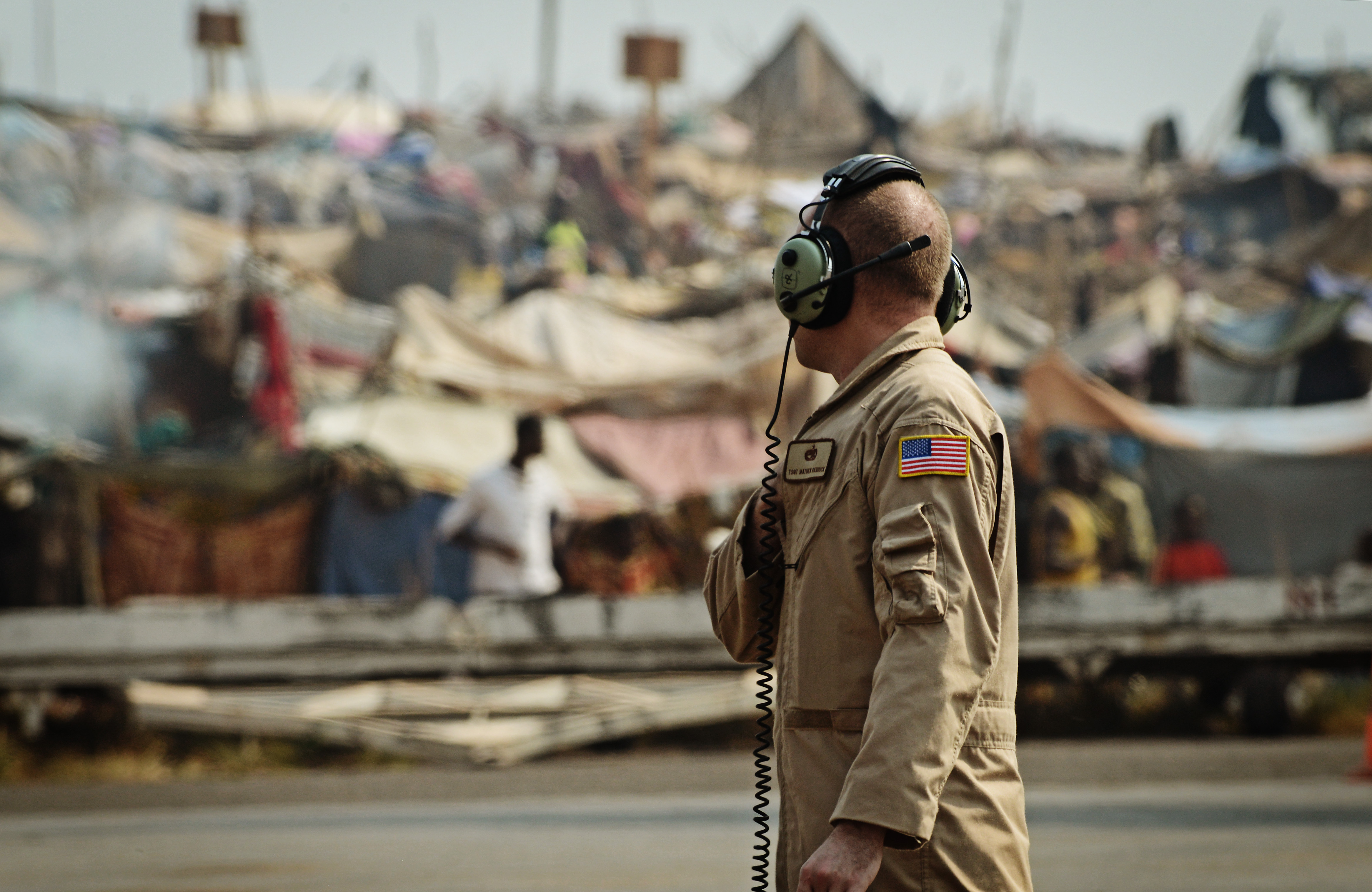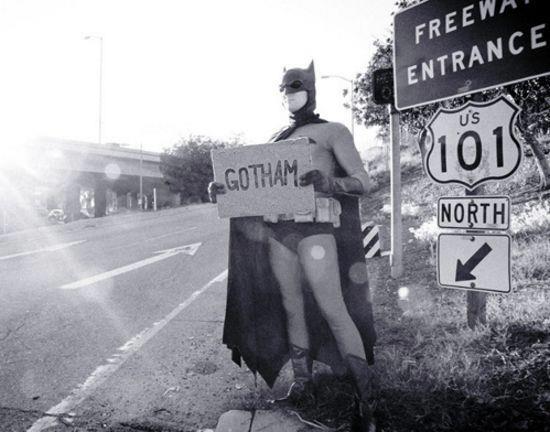21 Historic College Stadiums That Every Sports Fan Should Visit
College stadiums aren’t just places where games are played—they’re cathedrals of sport, where history, passion, and tradition collide under the roar of tens of thousands of fans. These hallowed grounds have witnessed legendary rivalries, iconic plays, and the rise of future superstars, making them must-visit destinations for any sports enthusiast. Each stadium tells a story, from the electrifying SEC atmospheres to the time-honored traditions of the Ivy League. Whether it’s the deafening chants of a packed student section, the century-old rivalries that define a season, or the architectural marvels that stand as monuments to the game, these venues offer an experience that transcends the sport itself. We’ve expanded our list to 21 historic college stadiums that every fan should visit at least once. Whether you're a die-hard supporter or just love the magic of game day, these stadiums belong on your bucket list
1. The Colosseum of the South: Bryant-Denny Stadium
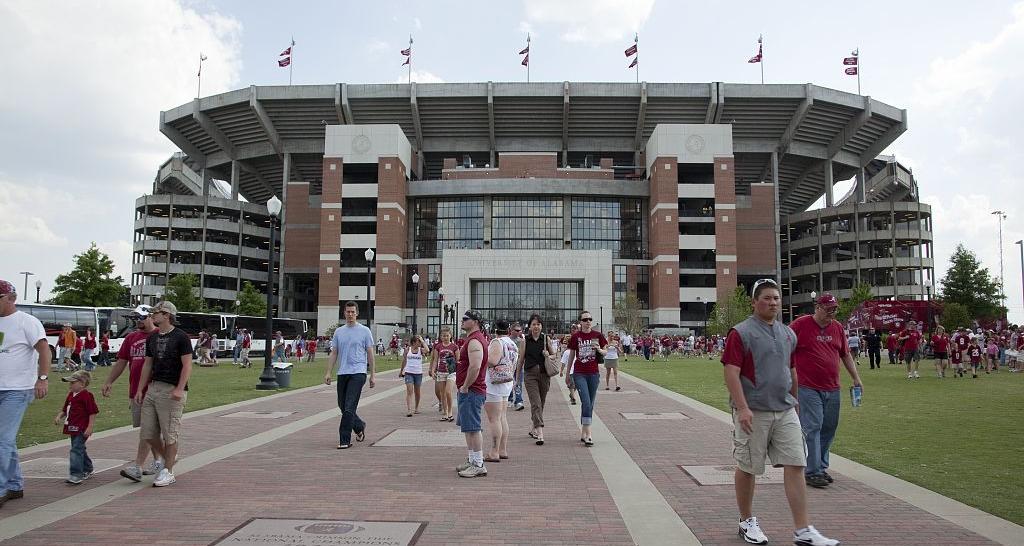
Located in Tuscaloosa, Alabama, Bryant-Denny Stadium is a monumental symbol of the University of Alabama's storied football legacy. Named after legendary coach Paul "Bear" Bryant and former university president George H. Denny, the stadium is a fortress of college football excellence. With a seating capacity exceeding 100,000, it is one of the largest stadiums in the United States, and it regularly hosts one of the most fervent fan bases in the country. The stadium's atmosphere on game day is electric, with the Crimson Tide faithful creating a sea of red and white that resonates with passion and pride. Beyond its sheer size and fervor, the stadium is also a testament to the university's rich history, with numerous national championships and Heisman Trophy winners gracing its field. A visit to Bryant-Denny is not just about witnessing a game; it's about experiencing the heart and soul of Alabama football.
2. The Cathedral of College Football: Notre Dame Stadium
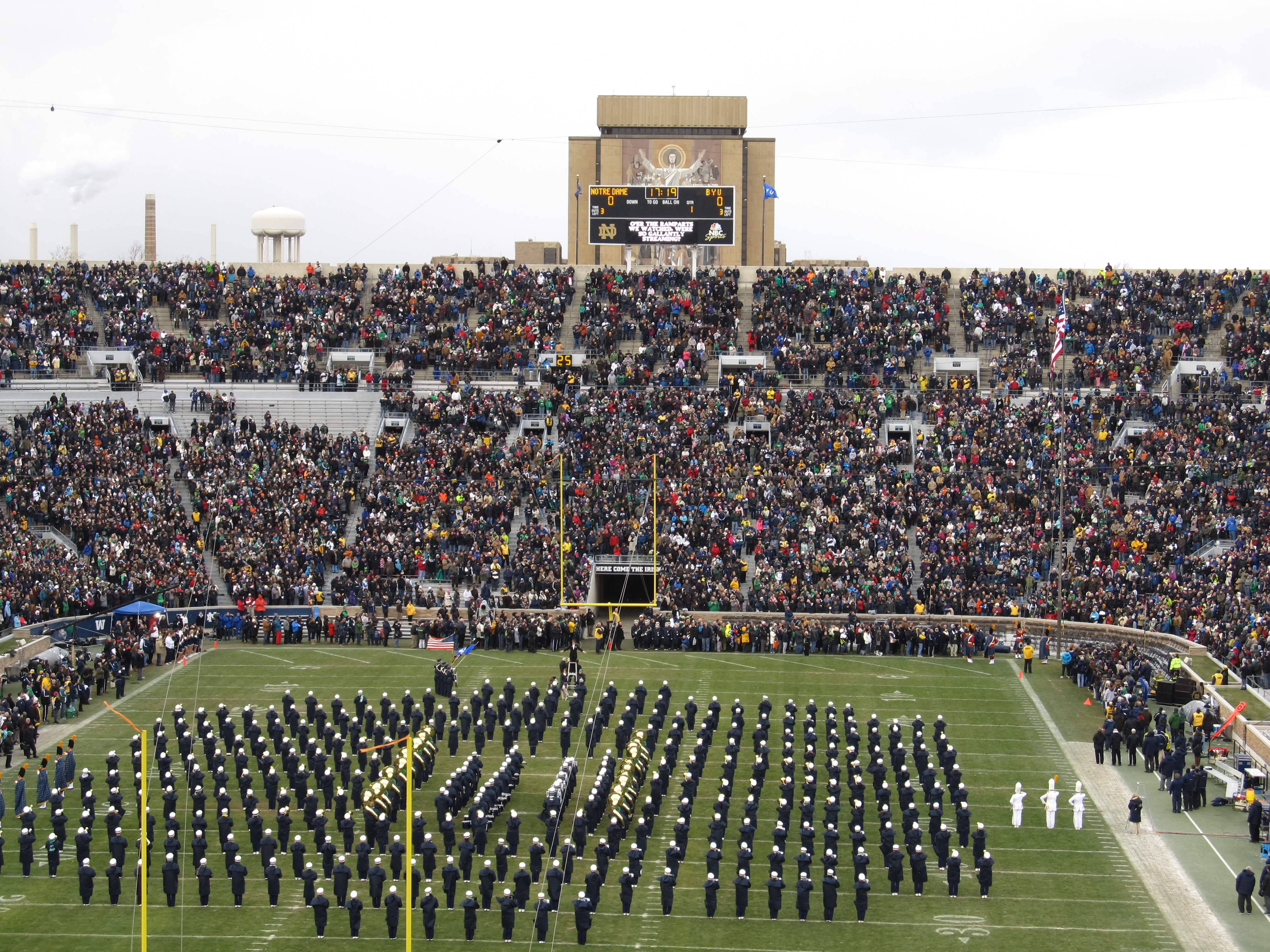
Notre Dame Stadium in South Bend, Indiana, is often referred to as the "Cathedral of College Football," and for good reason. Opened in 1930, the stadium is steeped in tradition and history, serving as the home of the Fighting Irish. The stadium's iconic design, with its brick facade and ivy-covered walls, evokes a sense of timelessness and reverence. On game days, the stadium comes alive with the sounds of the Notre Dame Victory March and the sight of the famous "Play Like a Champion Today" sign, which players touch as they take the field. The stadium has been the site of countless memorable moments, including the "Game of the Century" against Michigan State in 1966 and the "Bush Push" against USC in 2005. For sports enthusiasts, a visit to Notre Dame Stadium is an opportunity to immerse oneself in the rich tradition and pageantry of one of college football's most storied programs.
3. The Big House: Michigan Stadium
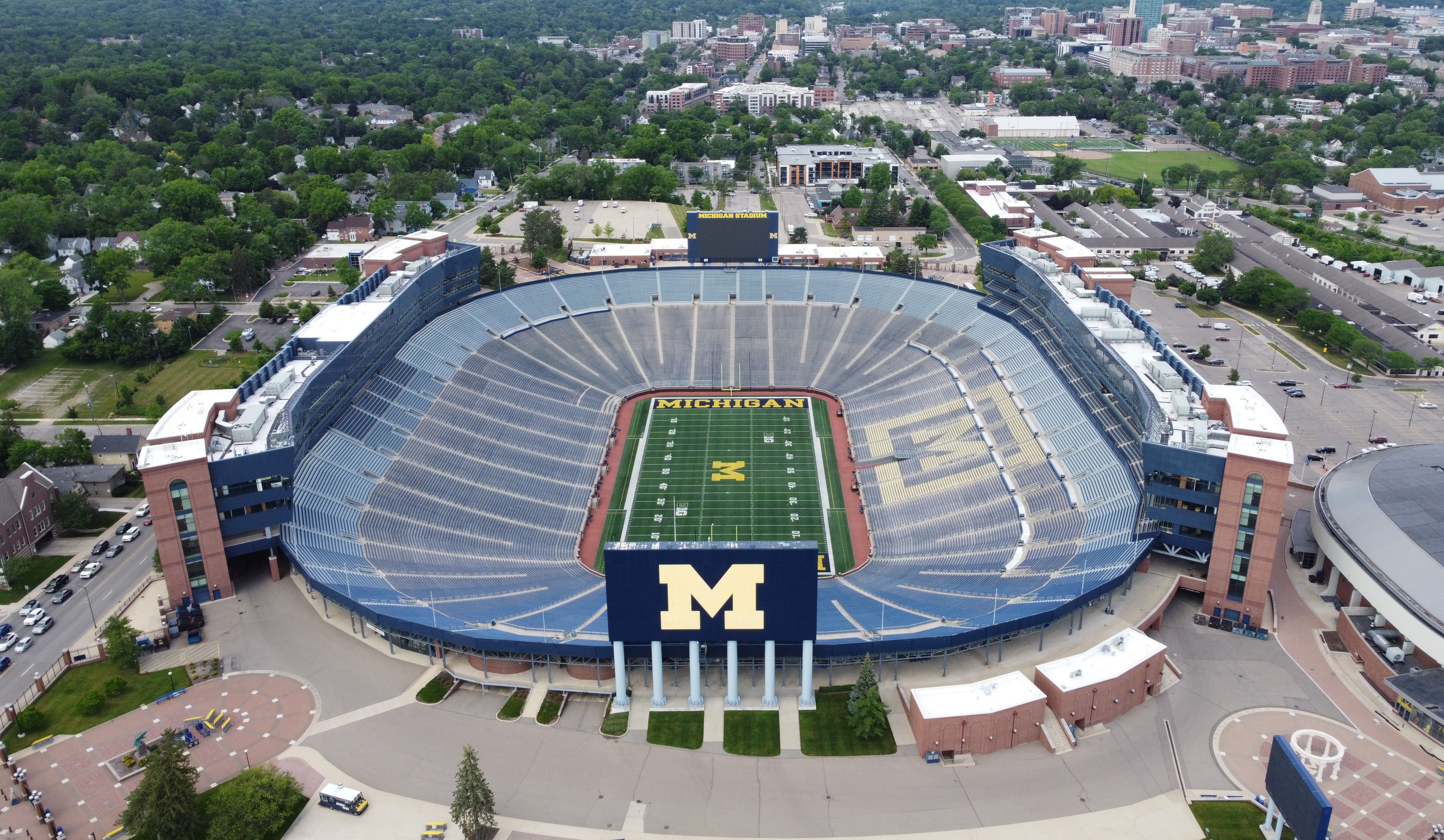
Michigan Stadium, affectionately known as "The Big House," is a behemoth of a venue that commands respect and admiration. Located in Ann Arbor, Michigan, it is the largest stadium in the United States, with a seating capacity of over 107,000. The stadium's sheer size is matched only by the passion of its fans, who create an unparalleled atmosphere on game days. The Big House is not only a marvel of engineering but also a monument to the University of Michigan's rich football tradition. From the legendary coaching tenure of Bo Schembechler to the thrilling performances of Heisman Trophy winners like Desmond Howard and Charles Woodson, the stadium has been the backdrop for some of college football's most iconic moments. A visit to Michigan Stadium is a must for any sports enthusiast, offering a chance to experience the grandeur and excitement of one of the game's most revered venues.
4. The Swamp: Ben Hill Griffin Stadium
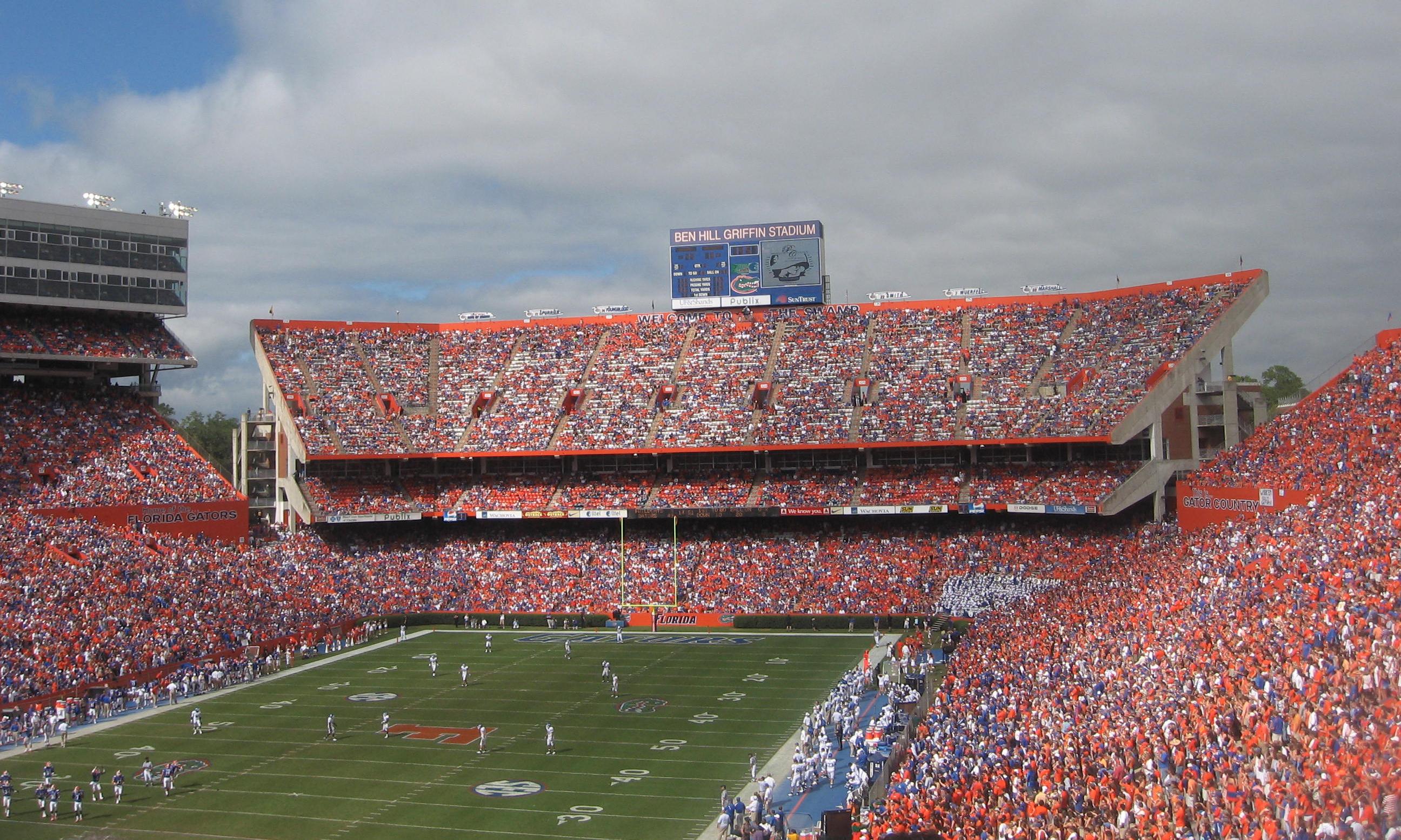
Ben Hill Griffin Stadium, commonly known as "The Swamp," is a place where opponents' dreams often come to die. Located in Gainesville, Florida, the stadium is the intimidating home of the University of Florida Gators. The Swamp's nickname is a nod to the oppressive heat and humidity that often envelop the stadium, creating a challenging environment for visiting teams. With a seating capacity of over 88,000, the stadium is one of the loudest in college football, with the passionate Gator fans creating a deafening roar that echoes throughout the venue. The Swamp has been the site of numerous memorable games, including the "Cocktail Party" against Georgia and the fierce rivalry with Florida State. For sports enthusiasts, a visit to Ben Hill Griffin Stadium is an opportunity to witness the unique blend of tradition, intensity, and southern hospitality that defines Florida football.
5. The Horseshoe: Ohio Stadium
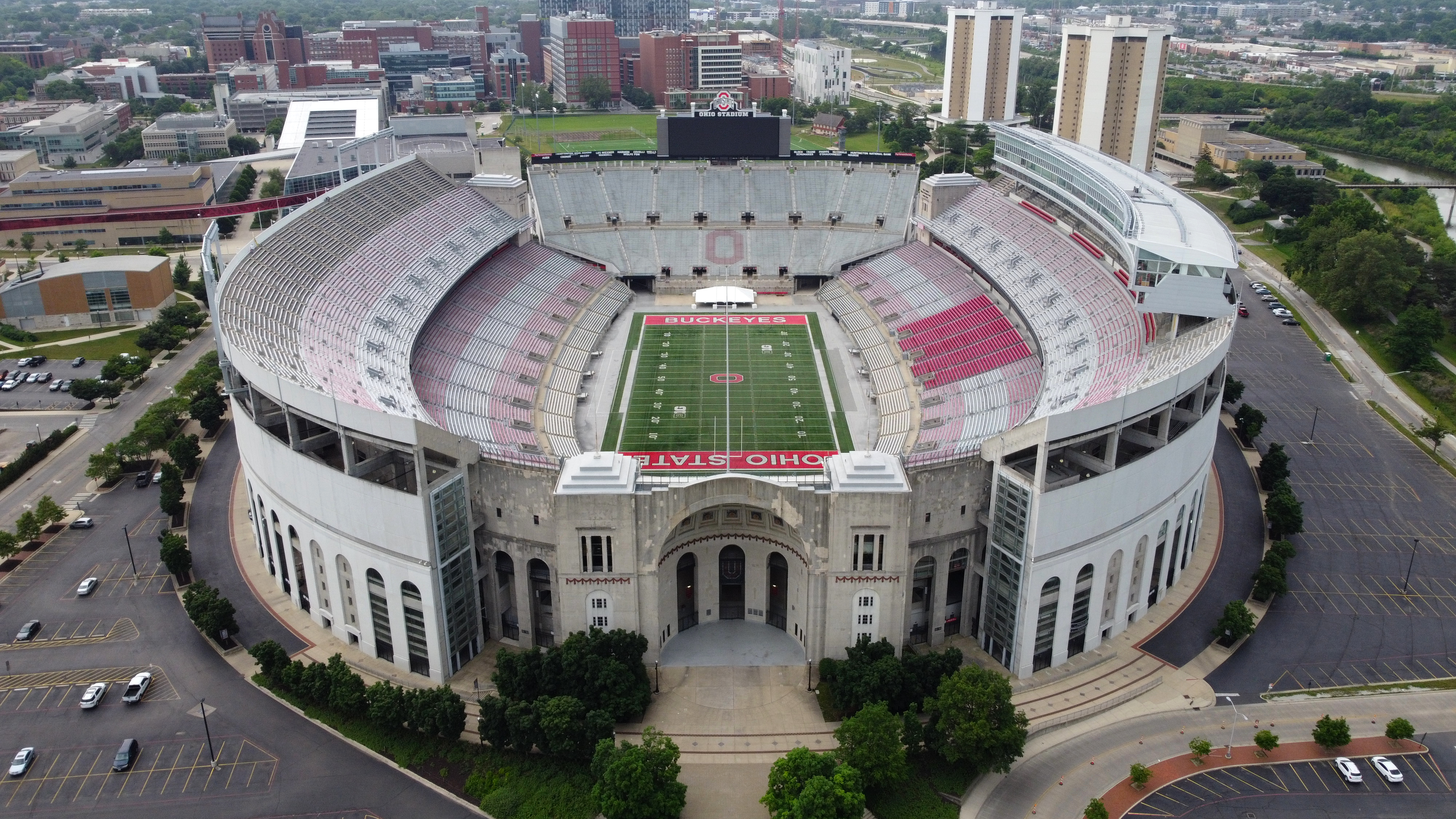
Ohio Stadium, affectionately known as "The Horseshoe" due to its distinctive shape, is a landmark of college football. Located in Columbus, Ohio, it serves as the home of the Ohio State Buckeyes. The stadium's iconic design, with its open end and towering double-deck stands, creates an imposing presence that is matched by the fervor of its fans. With a seating capacity of over 102,000, The Horseshoe is one of the largest stadiums in the country, and it regularly hosts some of the most passionate and dedicated fans in college sports. The stadium has been the site of numerous historic games, including the annual clash with arch-rival Michigan, known as "The Game." For sports enthusiasts, a visit to Ohio Stadium is an opportunity to experience the intensity and tradition of one of college football's most storied programs.
6. The Rose Bowl: A National Treasure
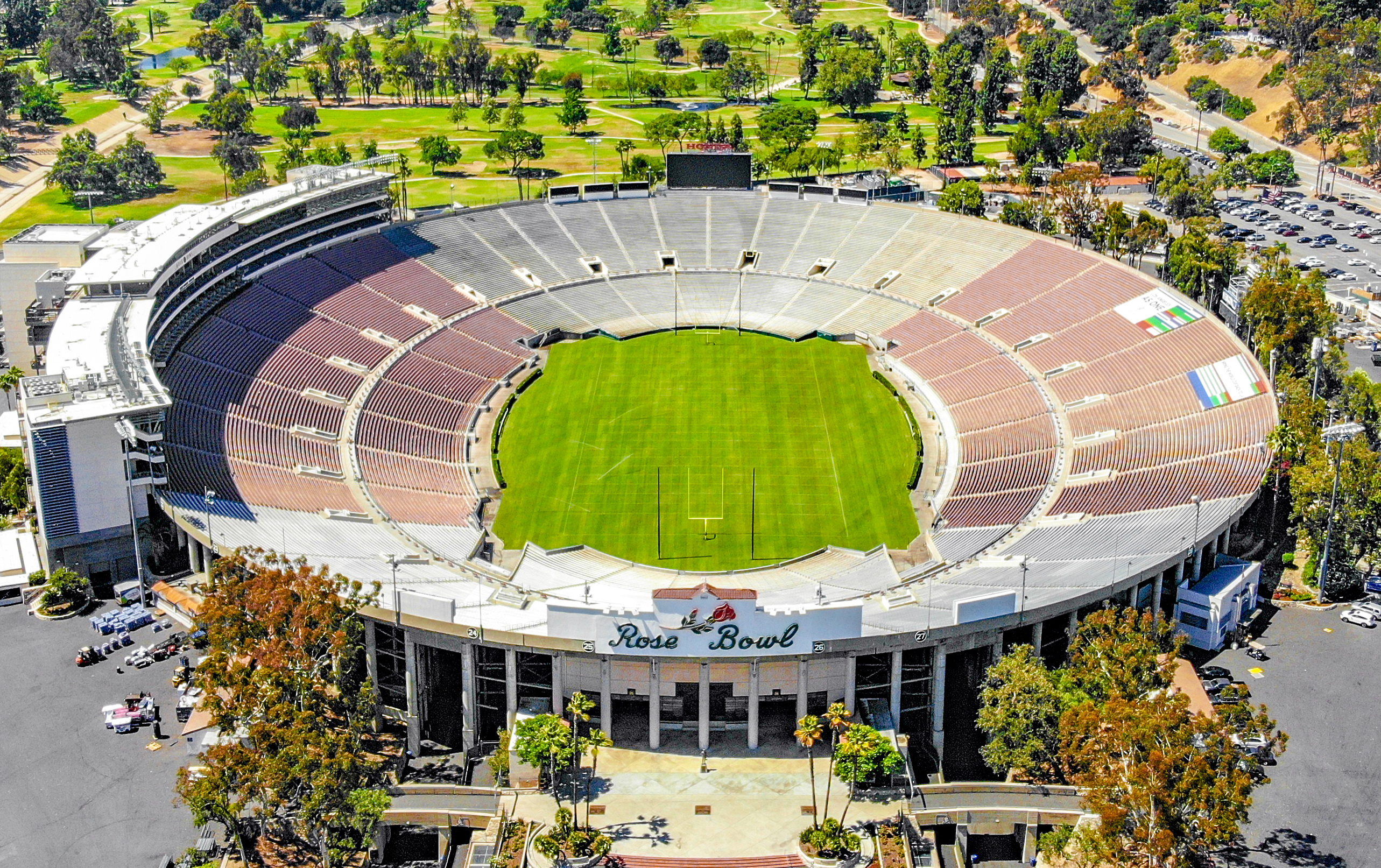
The Rose Bowl in Pasadena, California, is more than just a college football stadium; it is a national treasure. Known as the "Granddaddy of Them All," the Rose Bowl has been the site of the annual Rose Bowl Game since 1923, as well as numerous other historic events, including the 1994 FIFA World Cup Final and the 1984 Olympic soccer matches. The stadium's iconic design, with its picturesque backdrop of the San Gabriel Mountains, creates a stunning setting for any event. With a seating capacity of over 90,000, the Rose Bowl is one of the largest stadiums in the country, and it regularly hosts some of the most passionate and dedicated fans in college sports. For sports enthusiasts, a visit to the Rose Bowl is an opportunity to experience the grandeur and tradition of one of the most iconic venues in the world.
7. Death Valley: Tiger Stadium

Tiger Stadium in Baton Rouge, Louisiana, is a place where dreams are made and dashed in equal measure. Known as "Death Valley," the stadium is the intimidating home of the LSU Tigers. The nickname "Death Valley" is a nod to the raucous and intimidating atmosphere created by the passionate LSU fans, who create a deafening roar that echoes throughout the venue. With a seating capacity of over 102,000, Tiger Stadium is one of the largest stadiums in the country, and it regularly hosts some of the most passionate and dedicated fans in college sports. The stadium has been the site of numerous historic games, including the annual clash with arch-rival Alabama, known as the "Game of the Century." For sports enthusiasts, a visit to Tiger Stadium is an opportunity to experience the intensity and tradition of one of college football's most storied programs.
8. The Coliseum: Los Angeles Memorial Coliseum
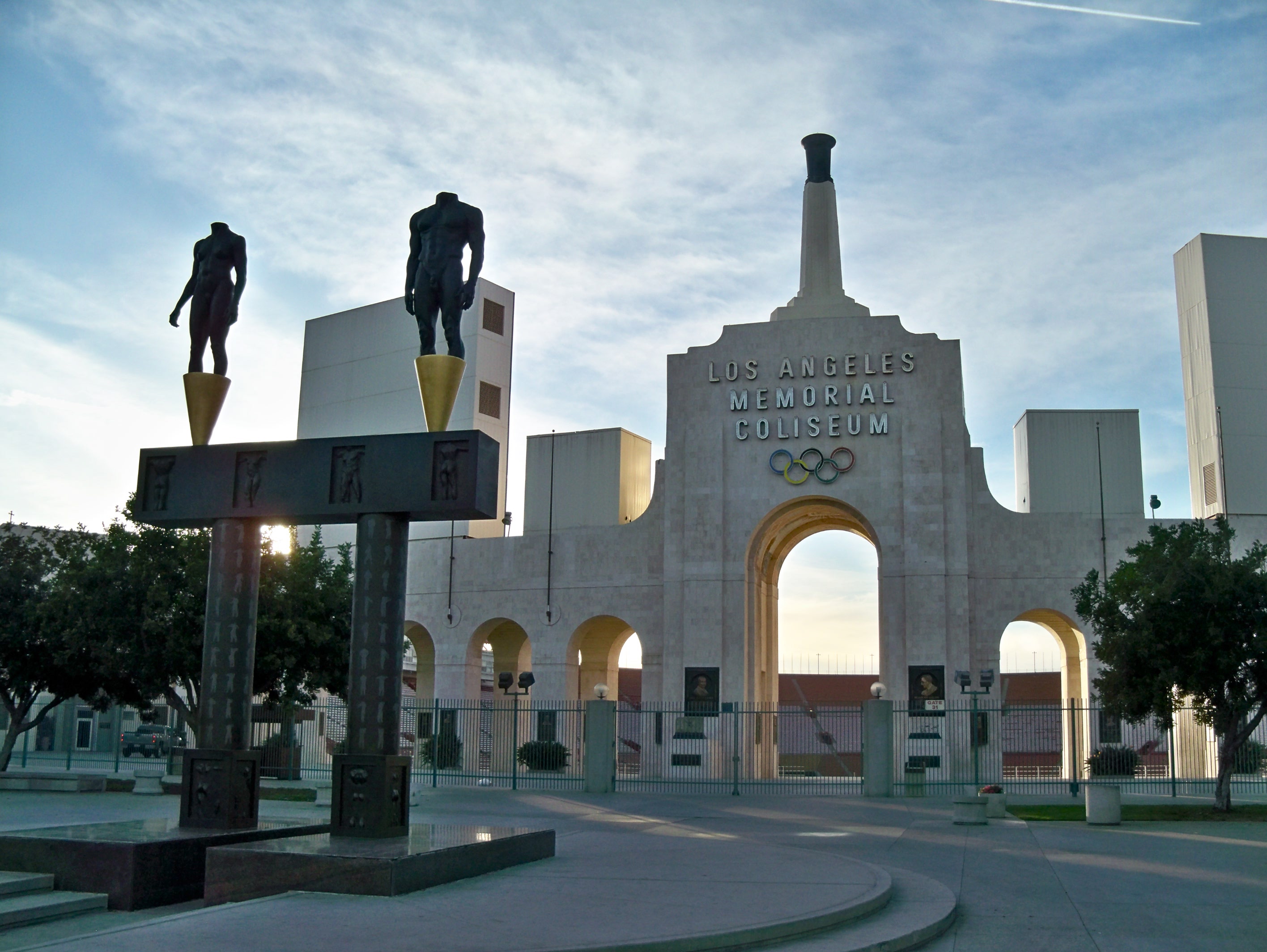
The Los Angeles Memorial Coliseum is a historic venue that has played host to some of the most iconic moments in sports history. Located in Los Angeles, California, the Coliseum has been the home of the USC Trojans since 1923. The stadium's iconic design, with its distinctive peristyle and Olympic torch, creates a stunning setting for any event. With a seating capacity of over 77,000, the Coliseum is one of the largest stadiums in the country, and it regularly hosts some of the most passionate and dedicated fans in college sports. The stadium has been the site of numerous historic events, including the 1932 and 1984 Olympic Games, as well as the first Super Bowl in 1967. For sports enthusiasts, a visit to the Los Angeles Memorial Coliseum is an opportunity to experience the grandeur and tradition of one of the most iconic venues in the world.
9. Camp Randall Stadium: A Fortress of Tradition
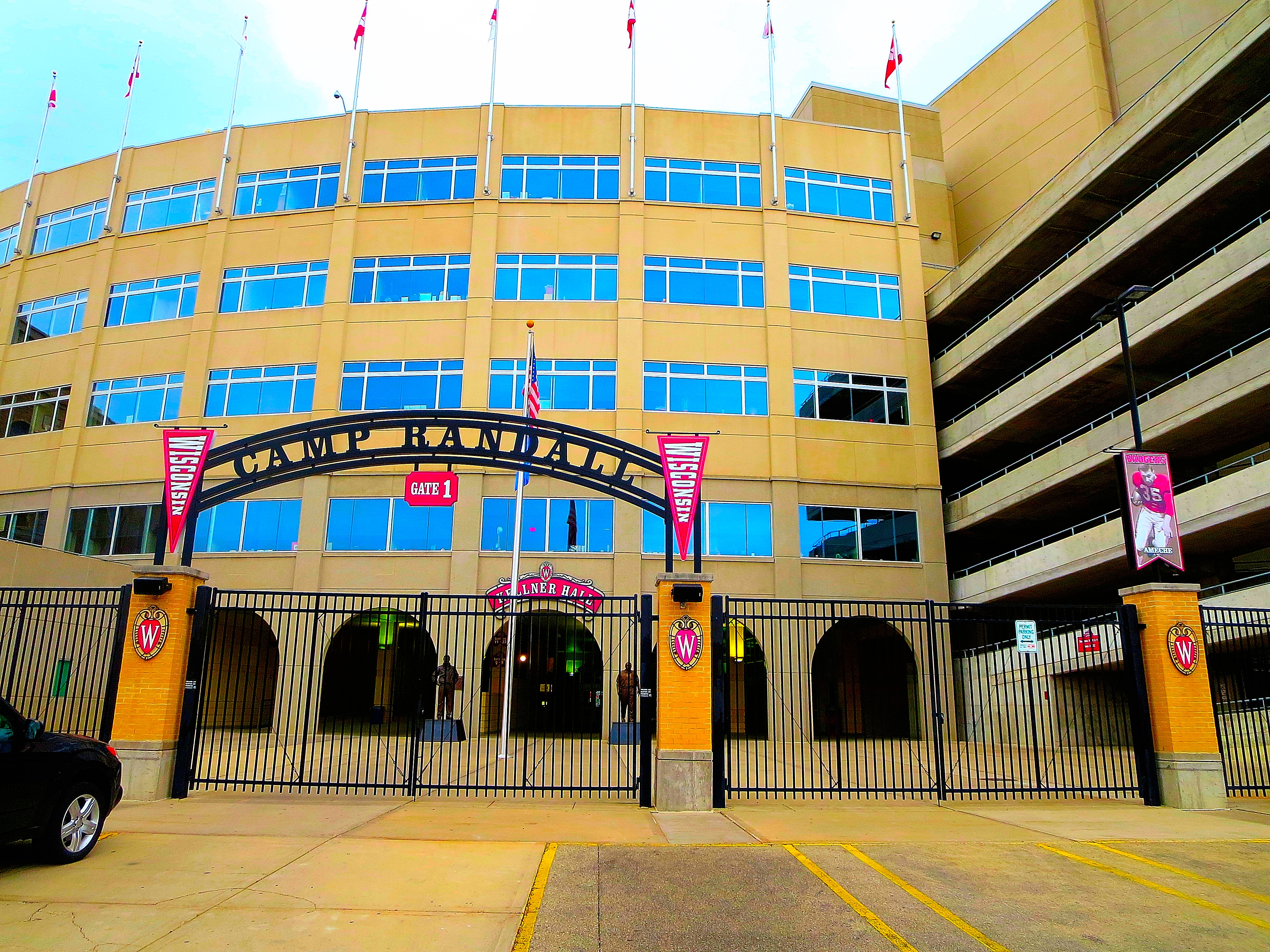
Camp Randall Stadium in Madison, Wisconsin, is a fortress of tradition and passion. Home to the University of Wisconsin Badgers, the stadium is named after the military training camp that occupied the site during the Civil War. With a seating capacity of over 80,000, Camp Randall is one of the largest stadiums in the country, and it regularly hosts some of the most passionate and dedicated fans in college sports. The stadium's atmosphere on game day is electric, with the famous "Jump Around" tradition and the sounds of the Wisconsin Marching Band creating an unforgettable experience. The stadium has been the site of numerous historic games, including the annual clash with arch-rival Minnesota, known as the "Battle for Paul Bunyan's Axe." For sports enthusiasts, a visit to Camp Randall Stadium is an opportunity to experience the intensity and tradition of one of college football's most storied programs.
10. The Yale Bowl: A Pioneer of Modern Stadiums
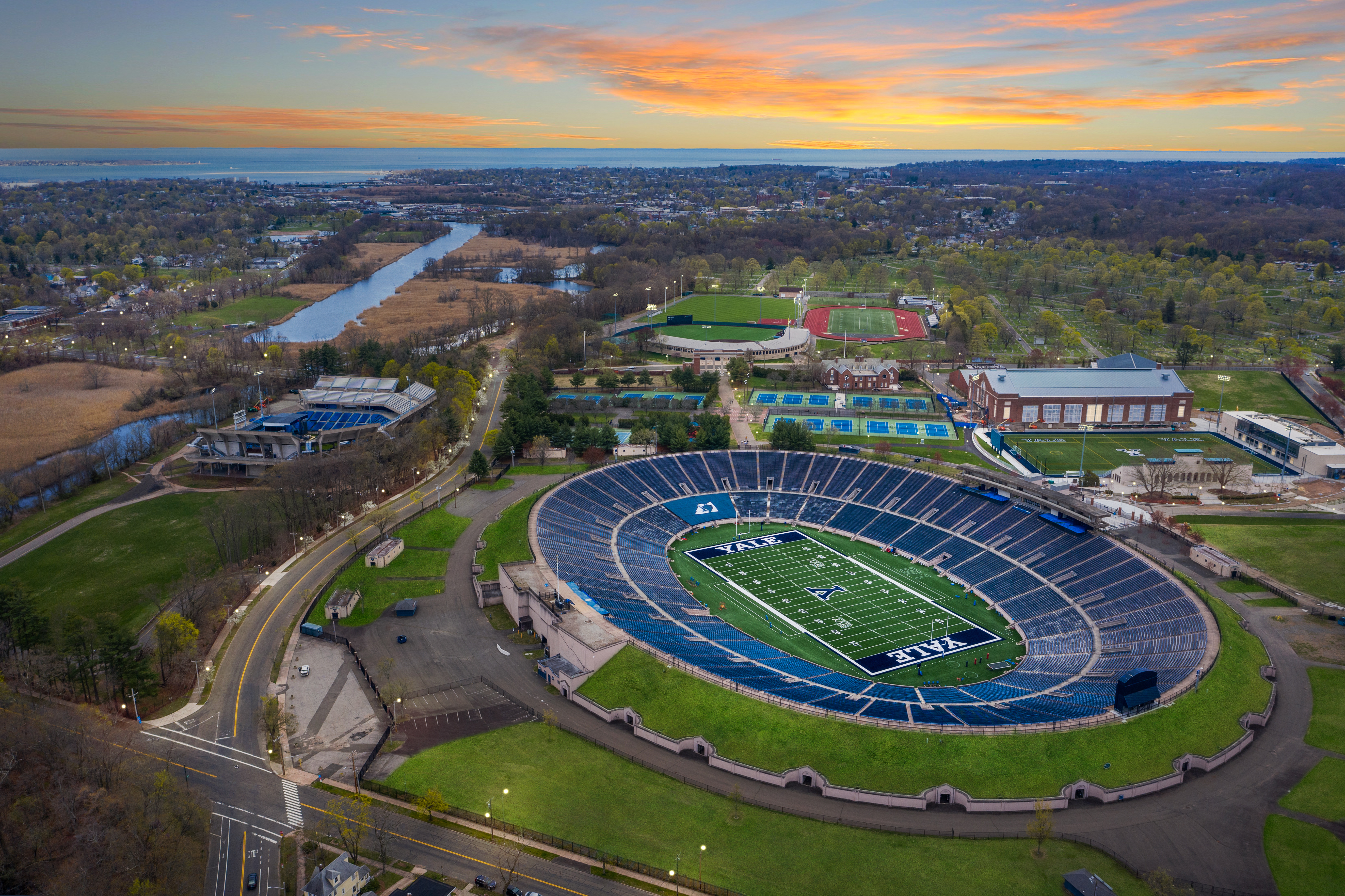
The Yale Bowl in New Haven, Connecticut, is a pioneer of modern stadium design. Built in 1914, the stadium was the first bowl-shaped stadium in the country, and it served as the inspiration for many of the iconic stadiums that followed. With a seating capacity of over 61,000, the Yale Bowl is one of the largest stadiums in the Ivy League, and it regularly hosts some of the most passionate and dedicated fans in college sports. The stadium's atmosphere on game day is electric, with the sounds of the Yale Precision Marching Band and the sight of the famous Handsome Dan mascot creating an unforgettable experience. The stadium has been the site of numerous historic games, including the annual clash with arch-rival Harvard, known as "The Game." For sports enthusiasts, a visit to the Yale Bowl is an opportunity to experience the history and tradition of one of college football's most storied programs.
11. Beaver Stadium: A Whiteout Wonderland
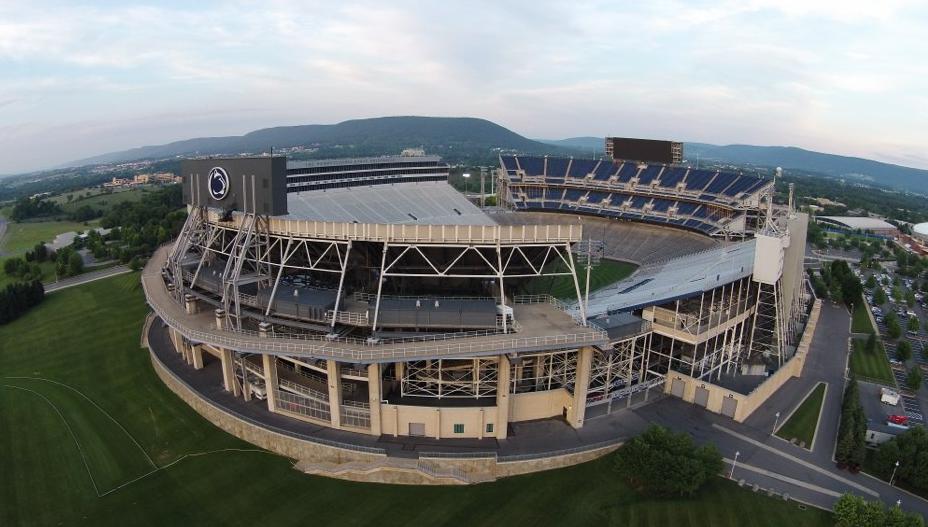
Beaver Stadium in University Park, Pennsylvania, is a whiteout wonderland that is home to the Penn State Nittany Lions. With a seating capacity of over 106,000, Beaver Stadium is one of the largest stadiums in the country, and it regularly hosts some of the most passionate and dedicated fans in college sports. The stadium's atmosphere on game day is electric, with the famous "Whiteout" tradition and the sounds of the Penn State Blue Band creating an unforgettable experience. The stadium has been the site of numerous historic games, including the annual clash with arch-rival Ohio State, known as the "Whiteout Game." For sports enthusiasts, a visit to Beaver Stadium is an opportunity to experience the intensity and tradition of one of college football's most storied programs.
12. Husky Stadium – The Greatest Setting in College Football
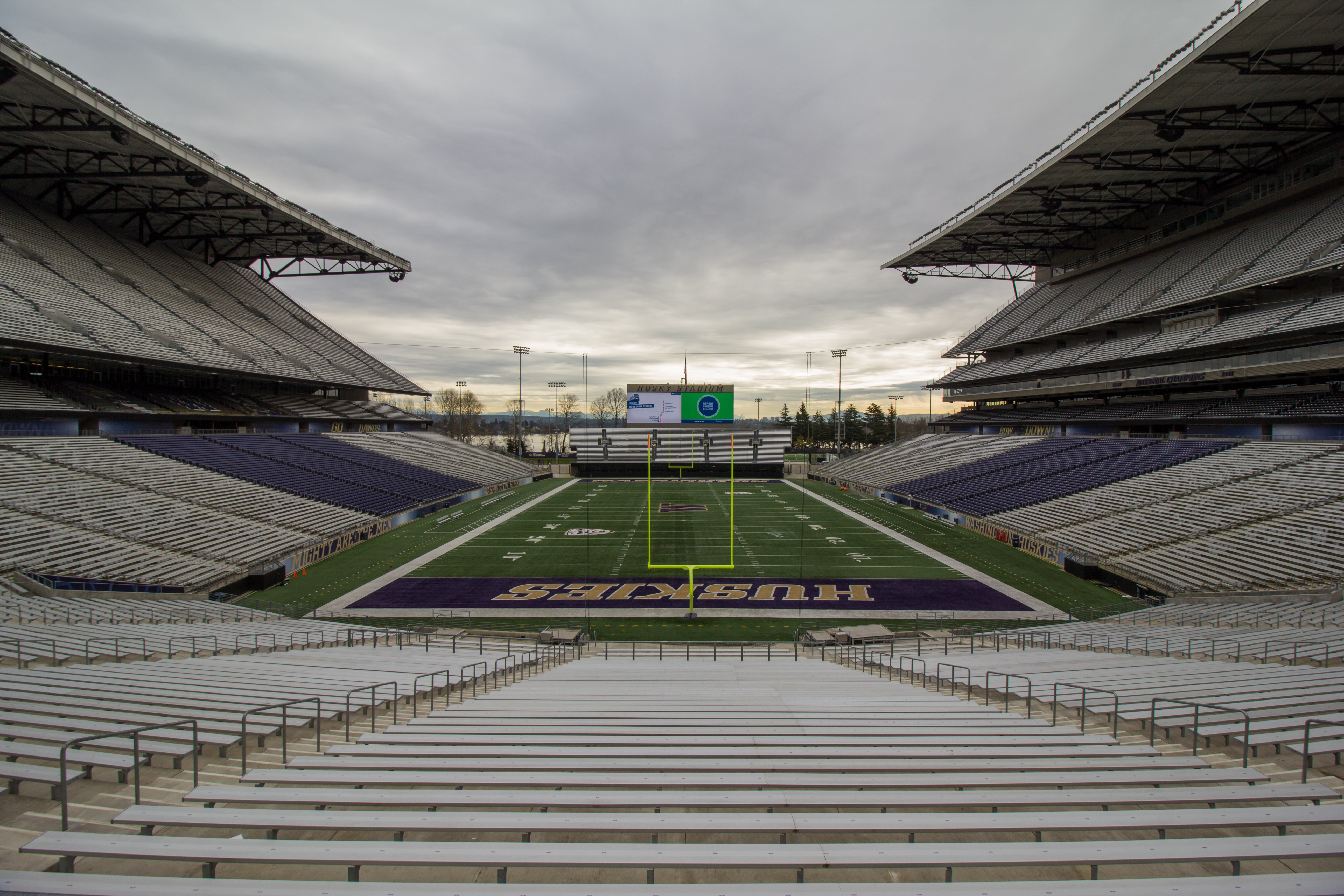
Few stadiums can boast a backdrop as breathtaking as Husky Stadium, home to the Washington Huskies. Nestled on the shores of Lake Washington, with the Cascade Mountains in the distance, this stadium is often called “The Greatest Setting in College Football.”Game day here is a spectacle unlike any other. Thousands of fans arrive by boat in a tradition called “Sailgating,” turning the lake into a floating tailgate party before kickoff. Inside the stadium, over 70,000 fans create a deafening roar, especially during big Pac-12 matchups. The stadium’s steep seating puts fans right on top of the action, amplifying the noise and intensity. A visit to Husky Stadium offers a rare blend of natural beauty and intense college football—a must-experience venue for any sports fan.
13. Lane Stadium – The Terror of Enter Sandman
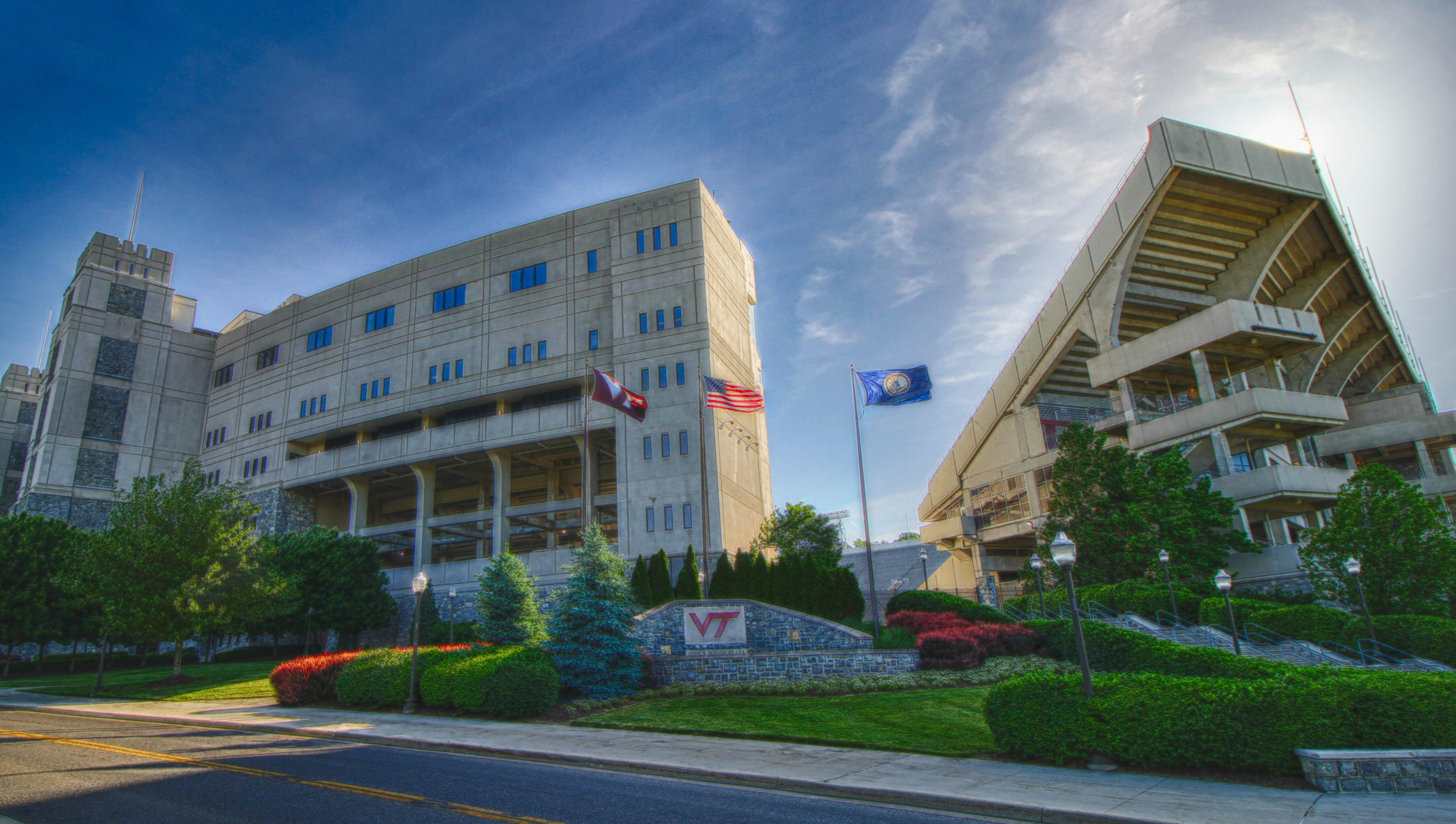
Virginia Tech’s Lane Stadium may not be the biggest, but it is one of the loudest and most electrifying stadiums in college football. The defining moment of any game? The legendary “Enter Sandman” entrance.Just before kickoff, over 65,000 fans jump in unison as Metallica’s Enter Sandman blares through the speakers. The entire stadium shakes with energy, and the Hokies feed off the crowd’s intensity. Visiting teams often struggle with the deafening noise, making Lane Stadium one of the toughest places to play. For a thrilling, high-energy experience, there’s nothing quite like a night game in Blacksburg.
14. Kyle Field – The Home of the 12th Man
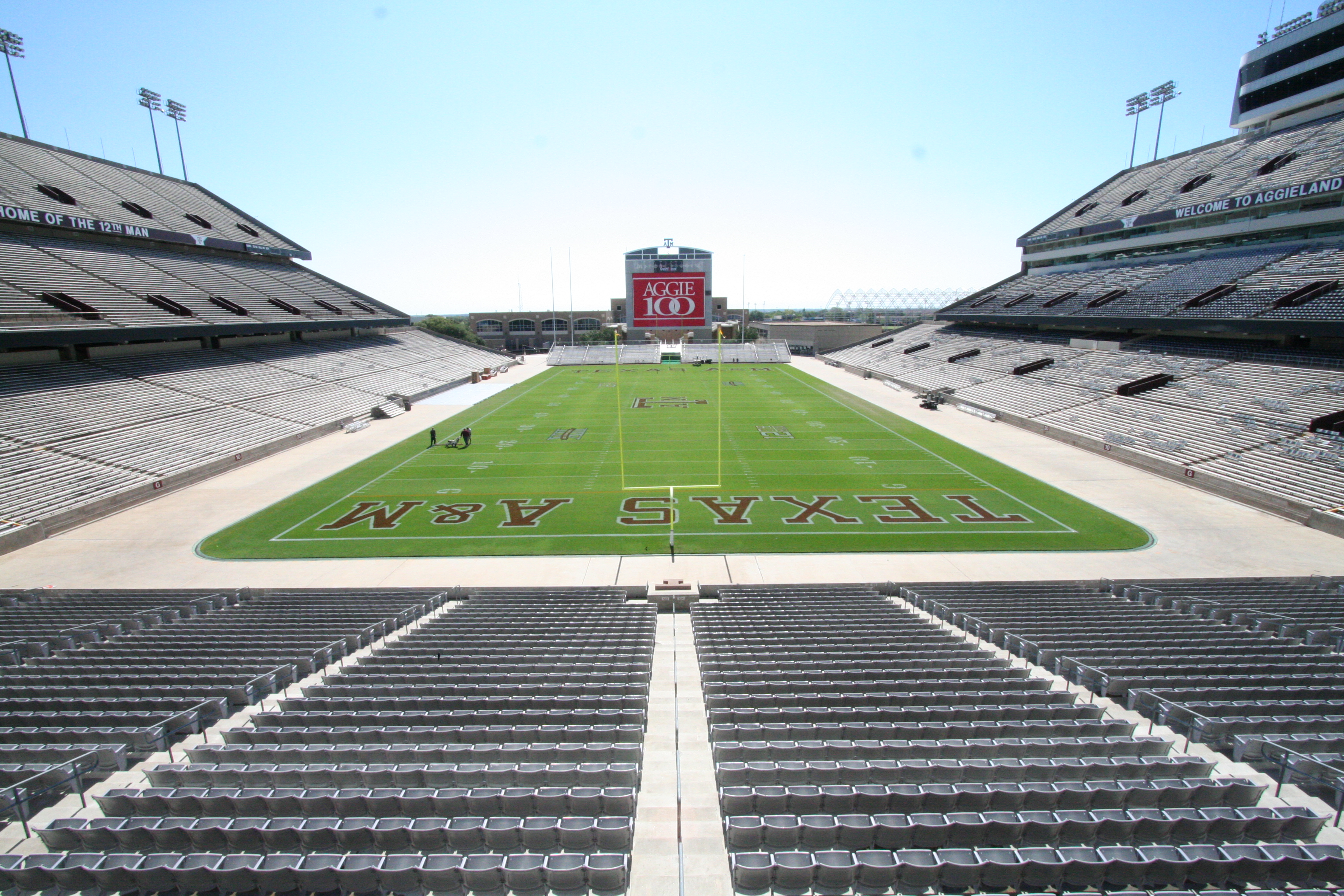
Football isn’t just a game at Texas A&M—it’s a way of life, and nowhere is that more evident than Kyle Field, home to the legendary 12th Man.Aggie fans don’t just cheer—they stand for the entire game, symbolizing their readiness to step in and play if needed. The Midnight Yell Practice the night before home games turns the stadium into a massive pep rally, preparing the crowd to be as loud as possible. With a seating capacity of over 102,000, Kyle Field is one of the largest and most intimidating stadiums in the country. If you want to experience football passion at its purest, this is the place.
15. Franklin Field – The Oldest College Stadium
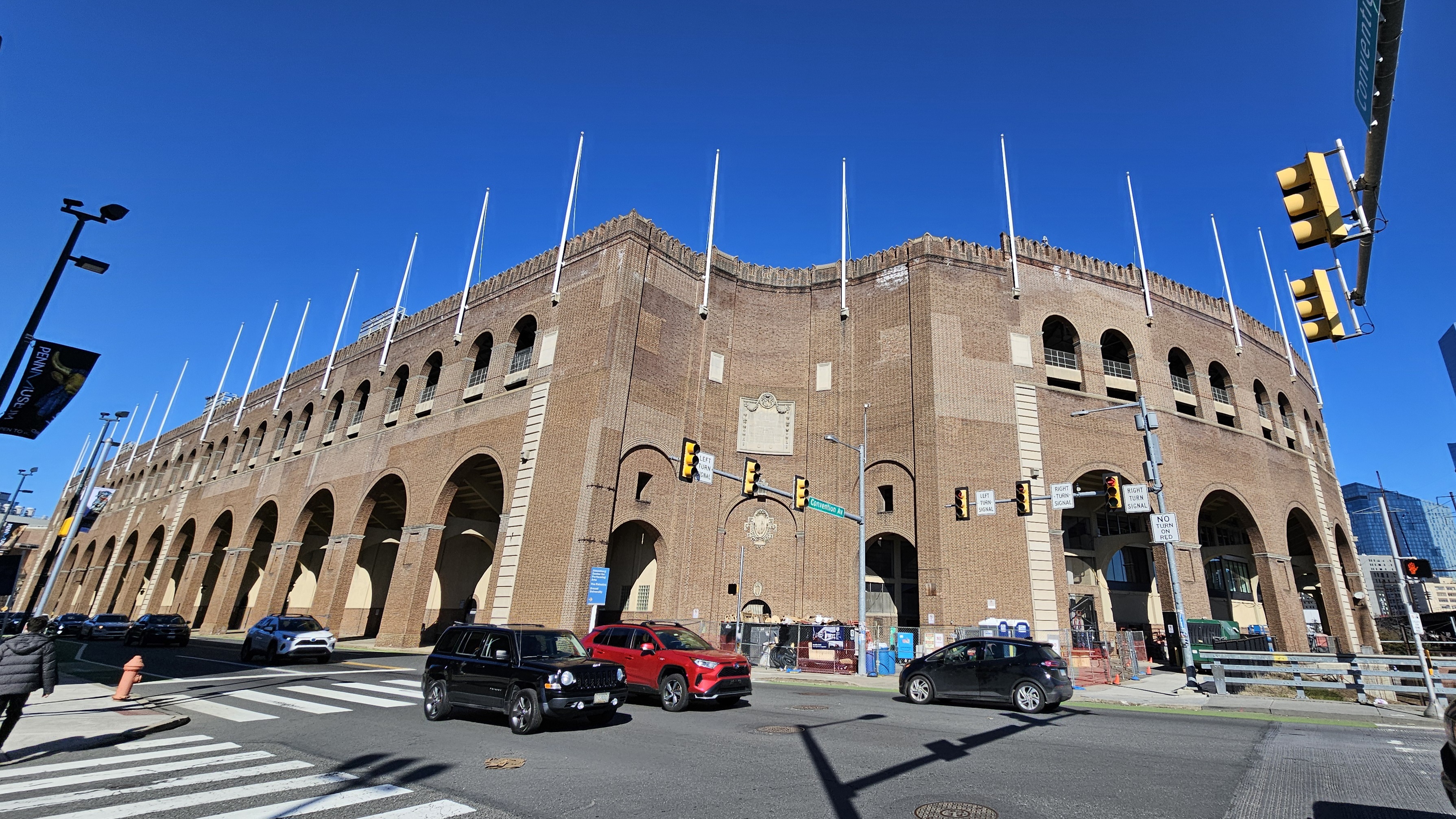
If you’re a sports history buff, Franklin Field is a must-visit. Built in 1895, it is the oldest operating stadium in college football and was the first stadium to feature a scoreboard. Home to the Penn Quakers, this stadium hosted the first-ever televised football game in 1939 and has been a fixture of the historic Penn Relays track meet for over a century. Though not as big as modern stadiums, Franklin Field’s history is unparalleled, making it a pilgrimage site for those who appreciate the origins of American sports.
16. Memorial Stadium – A Sea of Red
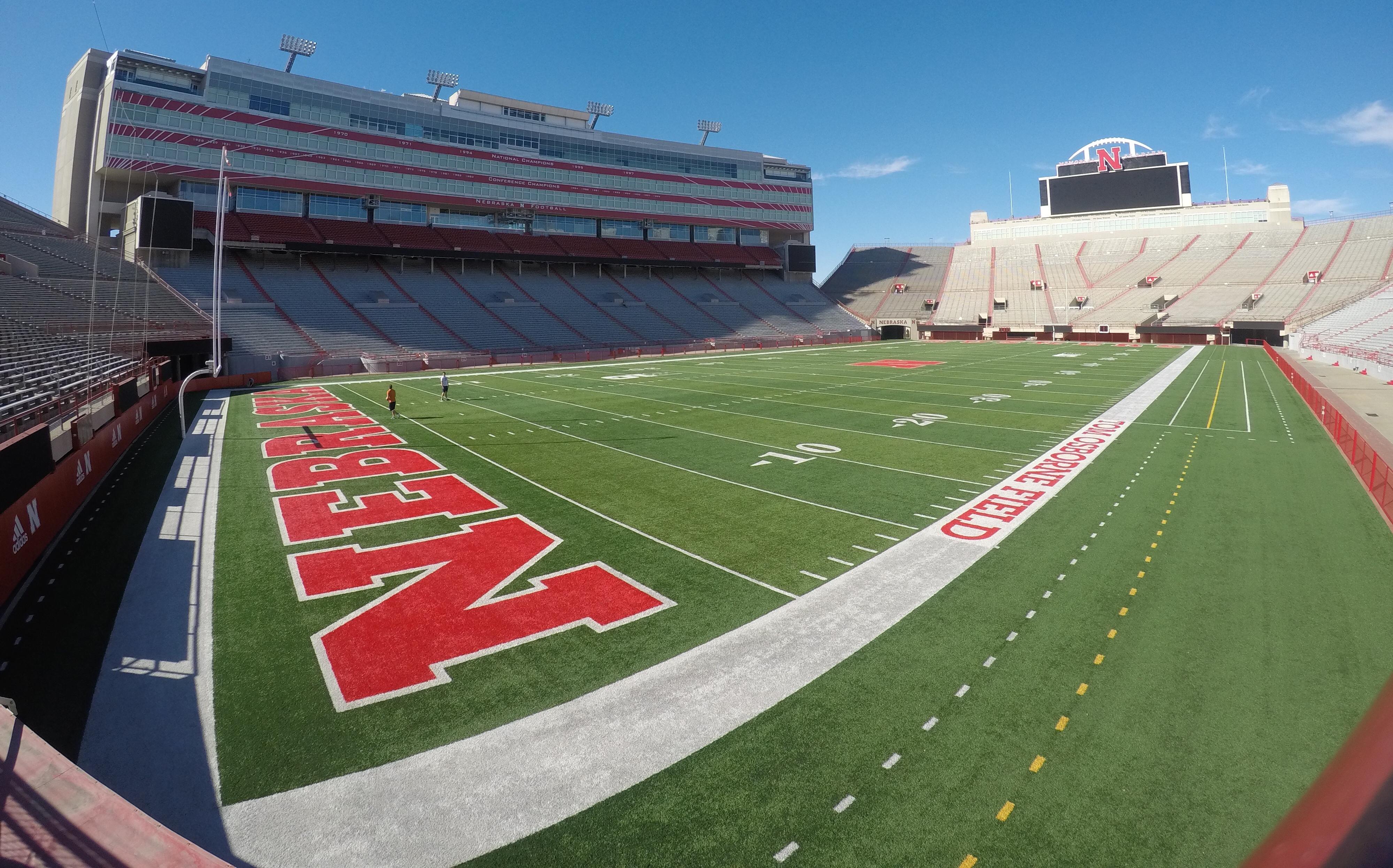
In Lincoln, Nebraska, football is king, and on game days, Memorial Stadium becomes the third-largest city in the state. With over 90,000 fans, Nebraska’s stadium turns into a roaring sea of red, making it one of the most intimidating and passionate atmospheres in the country. Nebraska’s fans, known as the “Greatest Fans in College Football,” are fiercely loyal, filling the stadium even during rebuilding seasons. Their sellout streak—dating back to 1962—is the longest in college football history.If you want to experience pure, unwavering devotion to a team, Memorial Stadium is a must-visit.
17. Michie Stadium – Football Among the Fall Foliage
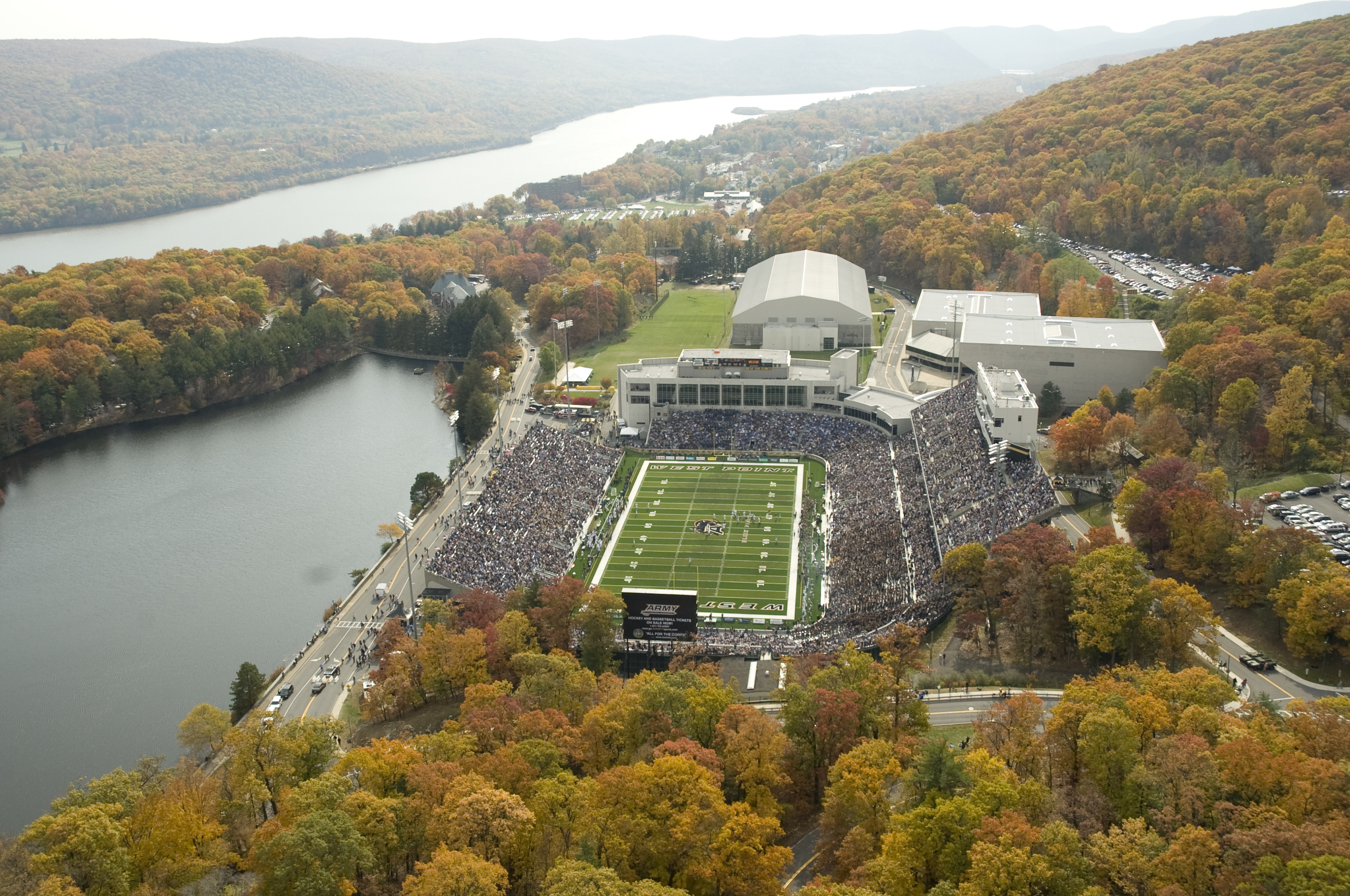
Few stadiums can match the patriotic significance and natural beauty of Michie Stadium, home to the Army Black Knights. Set against the backdrop of the Hudson River and surrounded by brilliant fall foliage, this stadium offers a breathtaking game-day setting. The cadet march-on ceremony and the tradition-rich Army-Navy Game make this one of the most unique and historic venues in the country. Whether you’re there for the football or the incredible sense of tradition, Michie Stadium is a one-of-a-kind experience.
18. War Memorial Stadium – The Highest Stadium in College Football
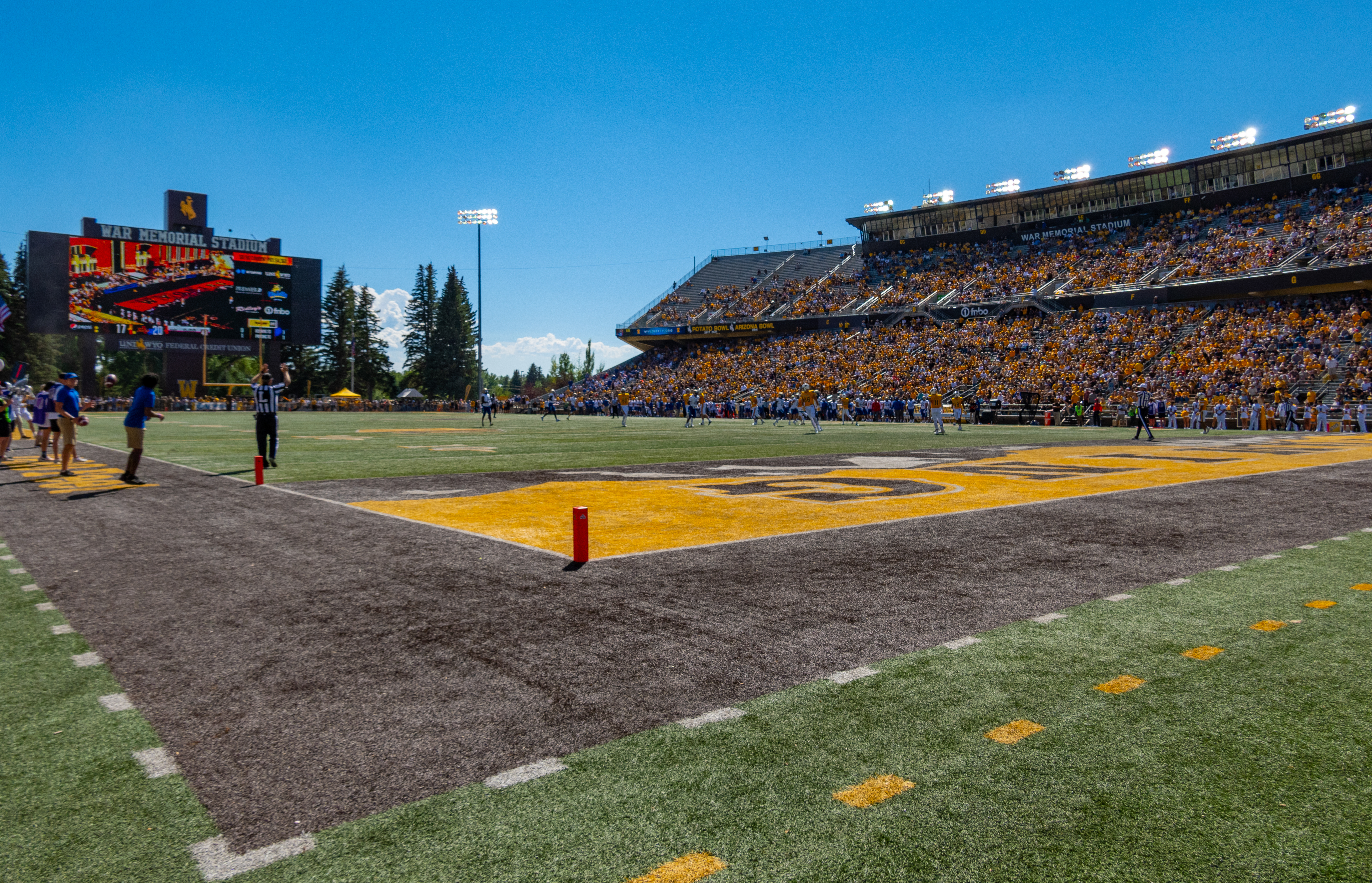
At 7,220 feet above sea level, War Memorial Stadium is the highest stadium in college football, giving the Wyoming Cowboys a literal home-field advantage. Opposing teams often struggle with the thin mountain air, while the passionate home crowd keeps the energy high. This stadium offers a rugged, frontier-like atmosphere, with spectacular Rocky Mountain views and an authentic Western vibe. The weather can be unpredictable, making for some epic snow-filled games late in the season. For fans looking for a unique college football setting, War Memorial Stadium delivers.
19. Harvard Stadium – The Birthplace of Modern Football
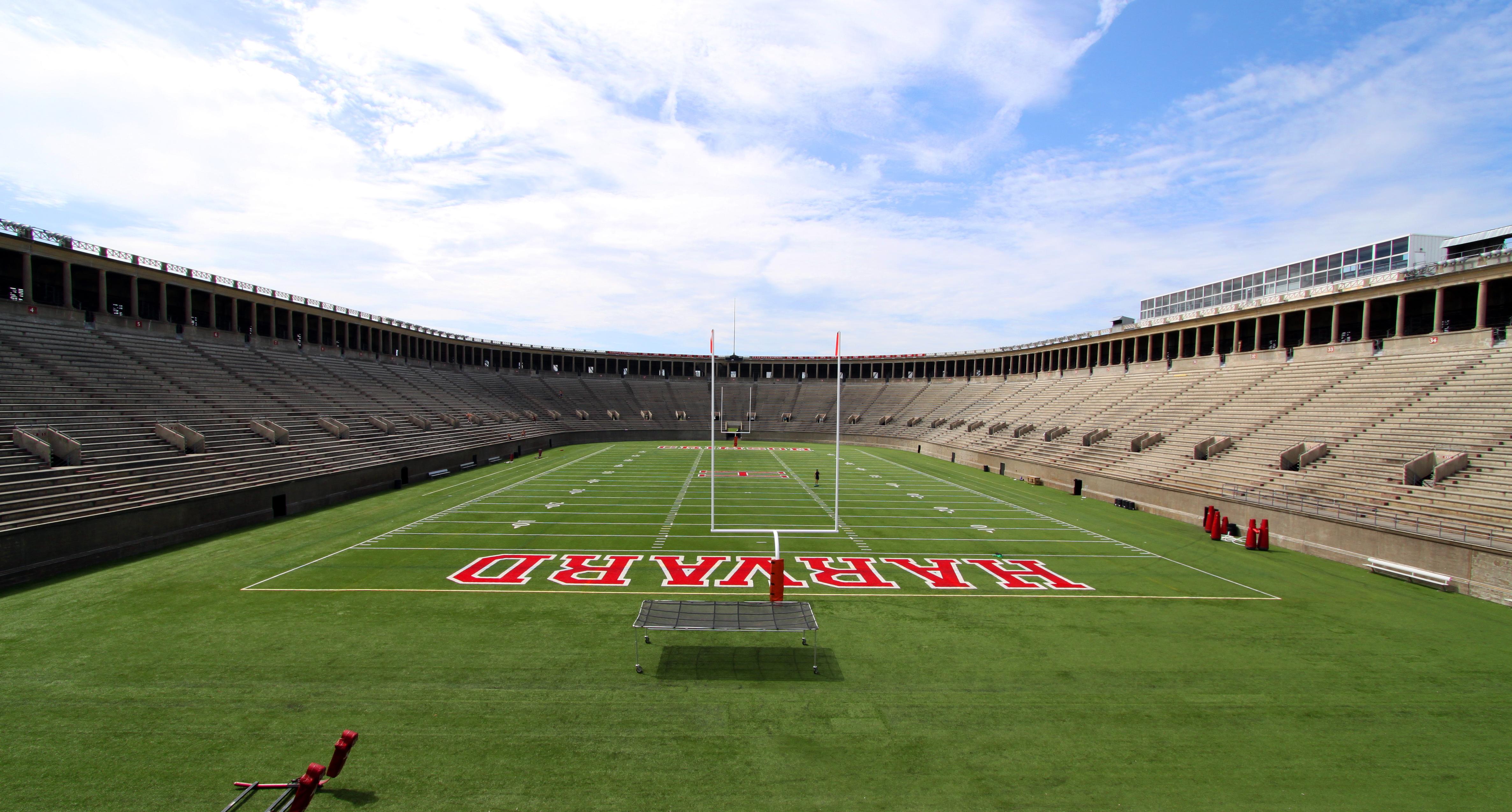
Harvard Stadium is a living piece of football history. Built in 1903, it was the first stadium constructed out of reinforced concrete and helped shape the modern game. Designed in the style of a Greek amphitheater, its U-shape influenced the design of many future college and NFL stadiums. Home to the famous Harvard-Yale rivalry, this venue offers a nostalgic, tradition-rich atmosphere that feels like stepping back in time. For sports history lovers, Harvard Stadium is a must-see.
20. Bobby Dodd Stadium – Football with a Skyline View
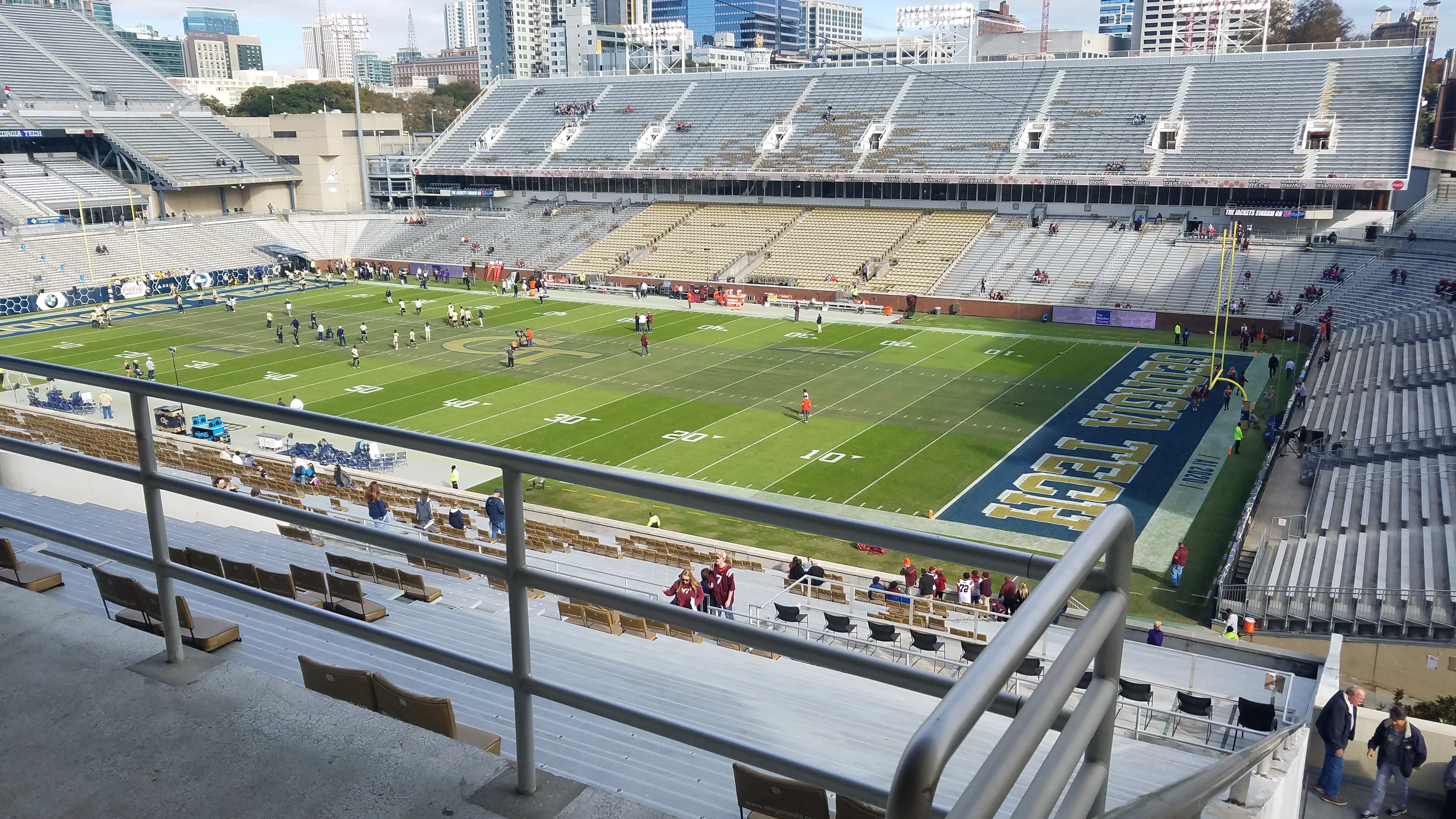
Located in downtown Atlanta, Bobby Dodd Stadium offers one of the most unique atmospheres in college football—a mix of historic tradition and a stunning skyline backdrop. Home to the Georgia Tech Yellow Jackets, this is the oldest stadium in the FBS, originally built in 1913. Its intimate design and electric student section make it an underrated gem. Watching a game under the Atlanta city lights creates a surreal experience that few stadiums can match.
21. Kinnick Stadium – The Wave That Moves a Nation
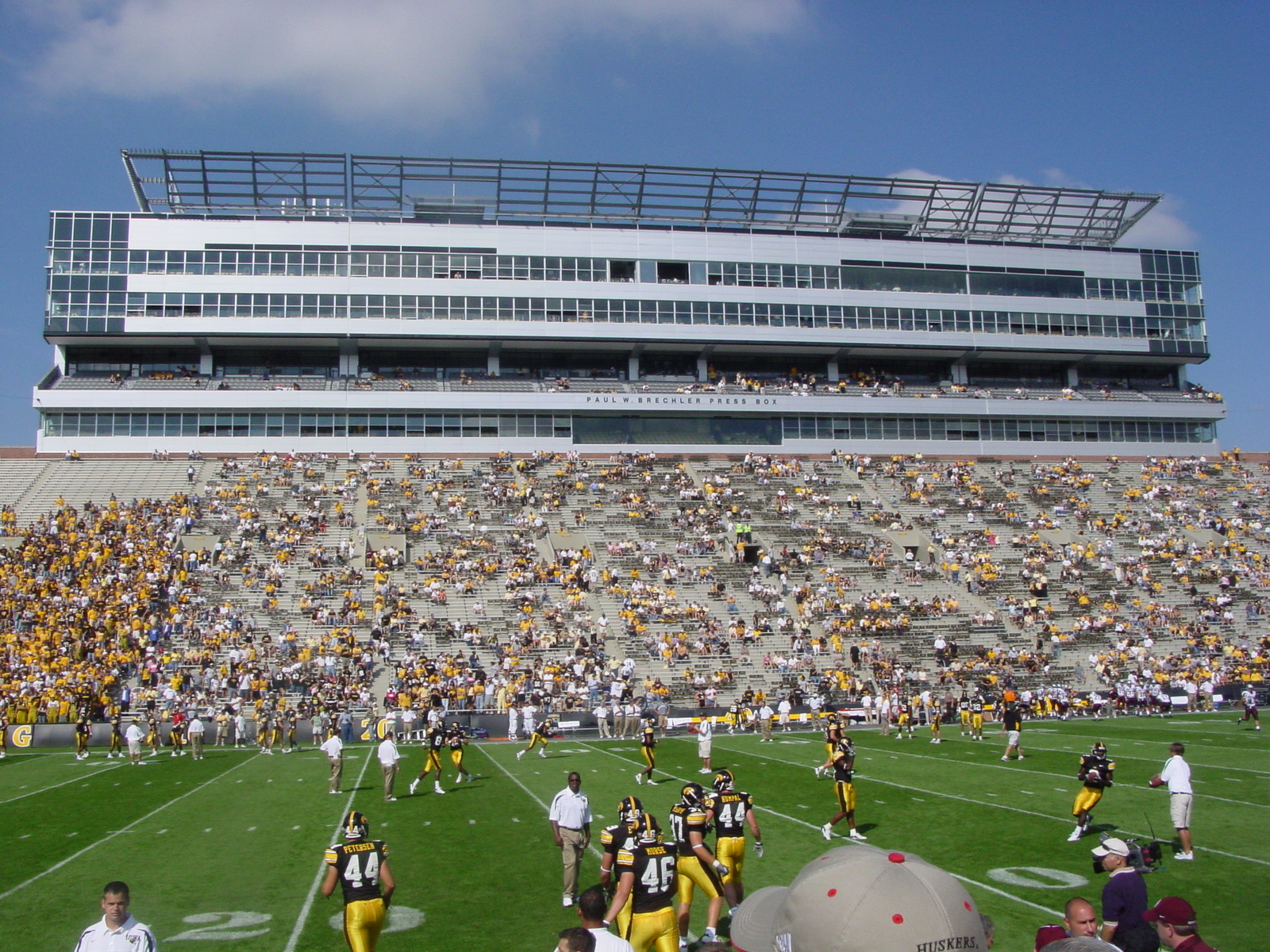
Kinnick Stadium is home to one of the most touching traditions in all of sports—The Iowa Wave. At the end of the first quarter, every fan in the stadium turns toward the University of Iowa Stead Family Children’s Hospital and waves to the young patients watching from the windows. This heartwarming moment unites players, fans, and children battling illness, making it one of the most powerful traditions in college football. Beyond this incredible tradition, Kinnick Stadium is a fortress with an incredibly passionate fan base, making game days here unforgettable.
The Timeless Allure of College Stadiums
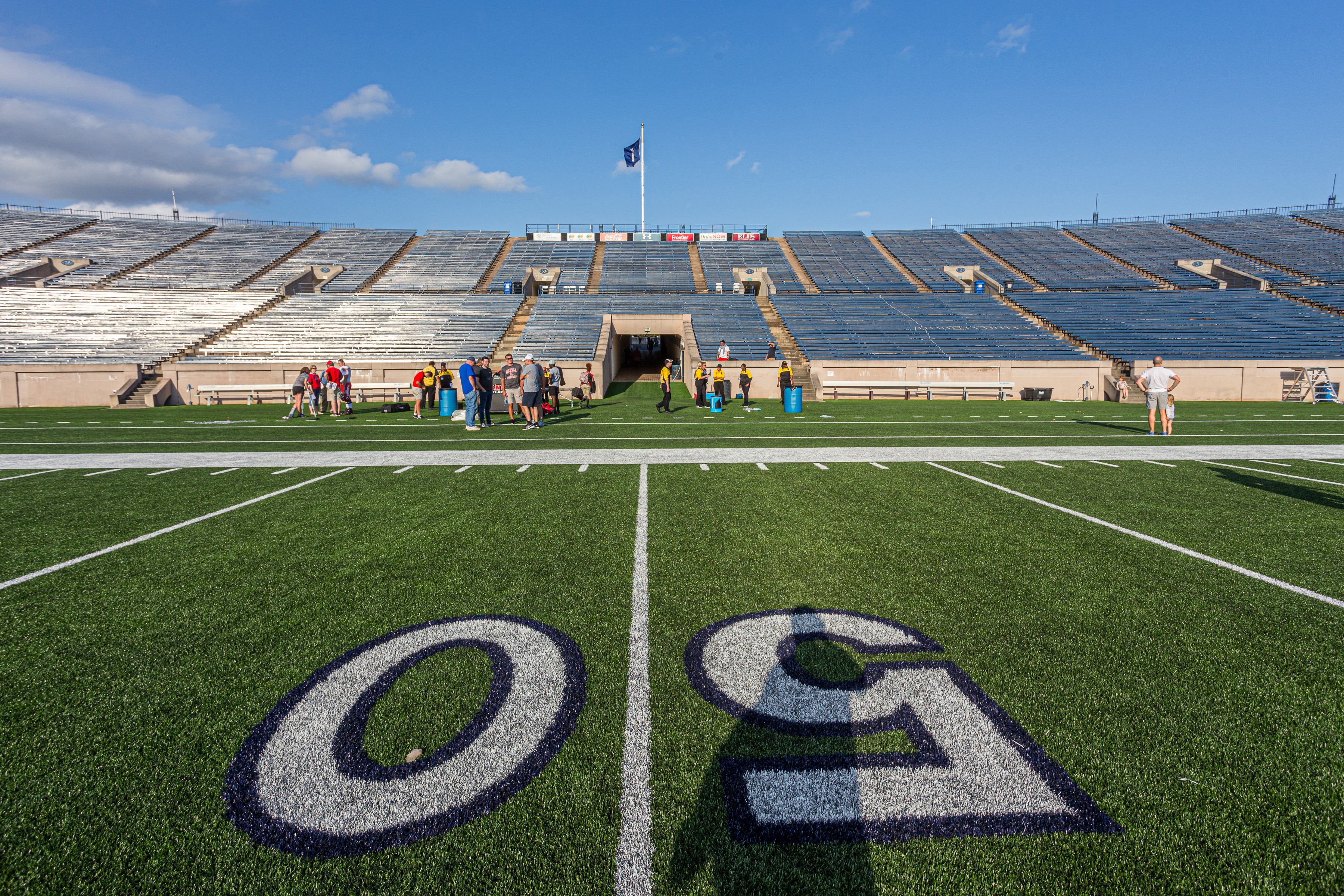
In exploring these legendary college stadiums, one finds more than just impressive architecture and capacity; these venues are living museums of sports history, each with its own unique narrative and cultural significance. They are the stages where legends are born, where the past meets the present, and where the unyielding spirit of competition continues to inspire. For sports enthusiasts, visiting these stadiums is a journey through time and tradition, offering a deeper understanding of the game and its impact on society. Whether it's the roar of the crowd, the pageantry of the bands, or the thrill of the game, these stadiums offer an experience that is both timeless and unforgettable. As you plan your own pilgrimage to these iconic destinations, remember that each stadium is more than just a place to watch a game; it's a place to witness history in the making.






